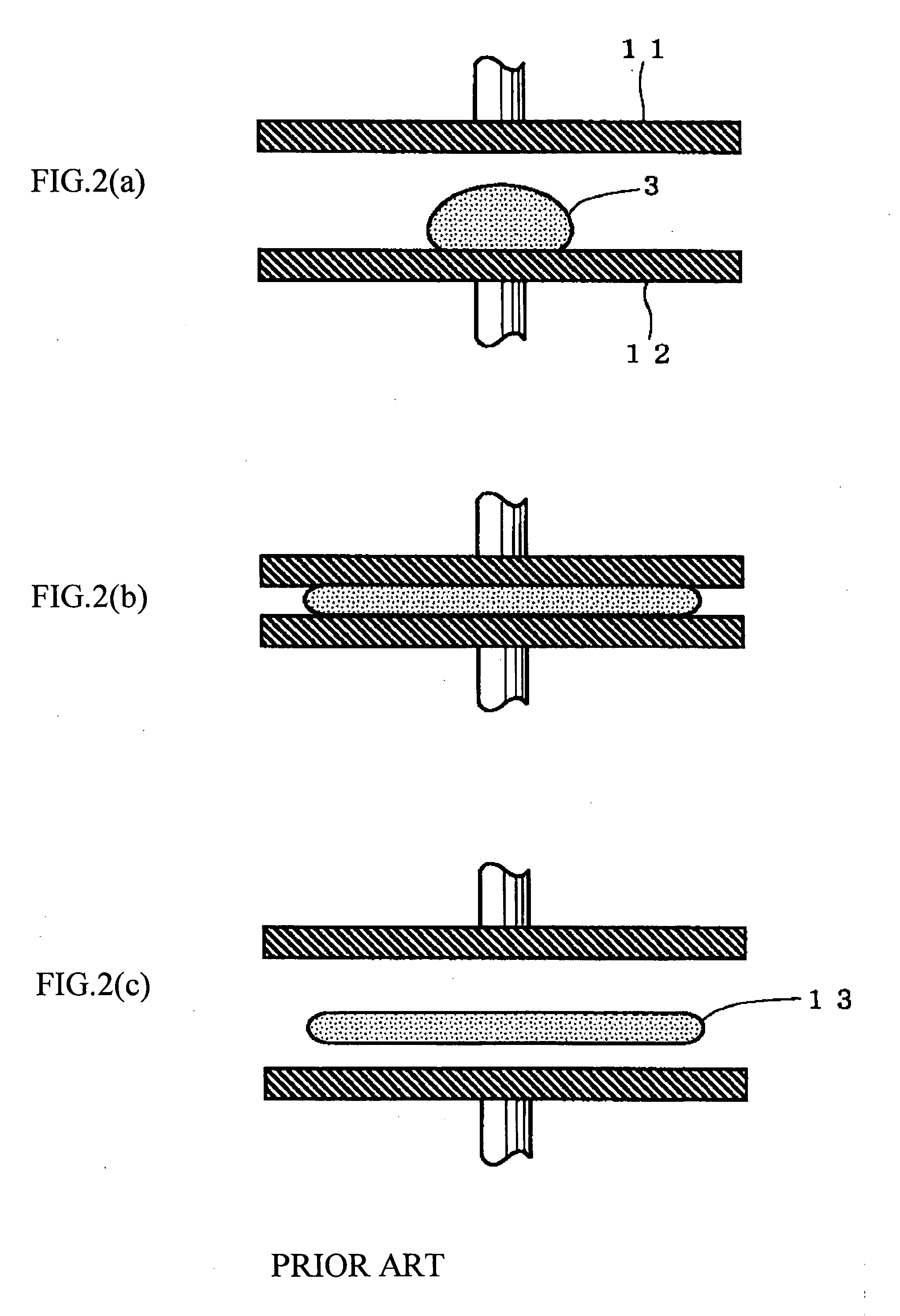Method of manufacturing glass substrate for information recording medium
- Summary
- Abstract
- Description
- Claims
- Application Information
AI Technical Summary
Benefits of technology
Problems solved by technology
Method used
Image
Examples
first embodiment
[0035]FIG. 3 is a flow chart of a method of manufacturing a glass substrate according to a first embodiment, wherein any step which is included in the conventional manufacturing method but can be omitted in the present embodiment is shown in a broken line (which is also applied to FIGS. 5, 7 and 11).
[0036] First, a glass material is melted (glass melting step). There is no particular limitation to the glass material used here. Any of glass materials such as lithium-aluminosilicate-based glass, magnesium-aluminosilicate-based glass, borosilicate-based glass and the like can be appropriately selected depending on a desired form of the glass substrate to be obtained (crystalline glass or amorphous glass).
[0037] Next, a certain amount of the molten glass is dropped or cast into a lower die and pressed by an upper die to be press-molded (press molding step). As shown in FIG. 4, a lower die 2 comprises a base part 21 having a flat plate shape, side parts 22 and 23 mounted on an upper su...
second embodiment
[0047] Next, a manufacturing method according to a second embodiment of the present invention is described. The manufacturing method according to the present embodiment is characterized in that a molded body having a cylindrical shape which is manufactured by the press molding is thinly cut to be formed into preforms having a central hole, and the preform is formed into a glass substrate in a final form by a so-called reheating method.
[0048]FIG. 5 shows a flow chart of an example of the manufacturing method according to the second embodiment. The description below is focused on steps which differ from the steps of the manufacturing method according to the previous embodiment. A glass material is melted (glass melting step), and the molten glass is press-molded by metallic dies for molding. As shown in FIG. 6, in the press-molding step of the manufacturing method according to the present embodiment, a certain amount of the molten glass 3 is dropped or cast into a lower die 6 in whic...
third embodiment
[0051] Next, a manufacturing method according to a third embodiment of the present invention is described.
[0052]FIG. 7 shows a flow chart of an example a method of manufacturing a glass substrate in which a central hole is provided and inner and outer peripheral edge surfaces have the chamfering shape. First, a glass material is melted (glass melting step). There is no particular limitation to the glass material used here, and any of the glass materials such as lithium-aluminosilicate-based glass, magnesium-aluminosilicate-based glass, borosilicate-based glass and the like is appropriately selected depending on the desired form of the glass substrate to be obtained (crystalline glass or amorphous glass).
[0053] Next, a certain amount of the molten glass is dropped or cast into a lower die and pressed by an upper die to be press-molded (press molding step). As shown in FIG. 8, a circular recessed portion 21 is formed in a lower die 2, and two protruding parts 21a and 21b having a we...
PUM
| Property | Measurement | Unit |
|---|---|---|
| Diameter | aaaaa | aaaaa |
| Shape | aaaaa | aaaaa |
| Efficiency | aaaaa | aaaaa |
Abstract
Description
Claims
Application Information
 Login to View More
Login to View More - R&D
- Intellectual Property
- Life Sciences
- Materials
- Tech Scout
- Unparalleled Data Quality
- Higher Quality Content
- 60% Fewer Hallucinations
Browse by: Latest US Patents, China's latest patents, Technical Efficacy Thesaurus, Application Domain, Technology Topic, Popular Technical Reports.
© 2025 PatSnap. All rights reserved.Legal|Privacy policy|Modern Slavery Act Transparency Statement|Sitemap|About US| Contact US: help@patsnap.com



